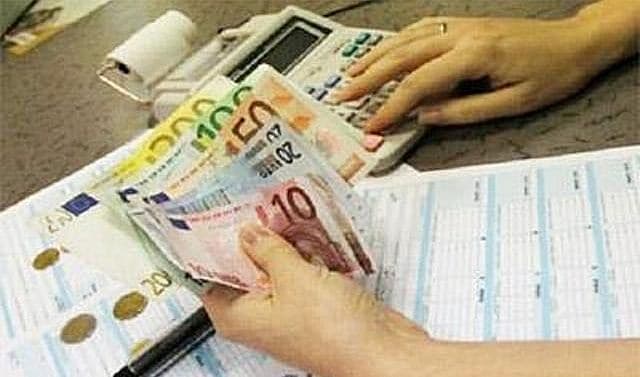
It is established that "patients must be treated with one of the first three drugs in the ranking of the framework agreement classified according to the criterion of the lowest price or the most economically advantageous offer" and that the doctorhe is in any case free to prescribe, without the obligation to give reasons, the drug deemed suitable (among those in the competition, obviously, Editor's note) to guarantee therapeutic continuity for patients".
Rome, 26 October - The 2017 budget maneuver has not yet reached the Chamber, but - at least in substance - its structure is now defined, even if the technicians of the Ministry of Economy continue to work on the final figures of the provision. Which, as far as health is concerned, confirms the "mother of all measures", i.e. the funding of the Health Fund for next year, set at 113 billion, which will rise to 114 in 2018 and 115 in 2019.
There have been many significant decisions in the pharmaceutical sector, starting with the redefinition of the expenditure ceilings for this item. In the meantime, as if to underline a break with the past, the name begins to be changed: the ceiling for hospital pharmaceuticals, which will be calculated gross of expenditure for class A drugs in direct distribution and distribution on behalf of direct purchases” and doubled, going from 3.5 to 7.0%. The fallout on the expenditure that "passes" from the local pharmacies is inevitable: the "agreed pharmaceutical expenditure" (this is the name by which it will be indicated), which until now was worth the 11.35% of the Fsn and whose bar is now set at 7.85%, 3.5 percentage points less, to ratify a spending trend which – in recent years – has seen the unstoppable progression of direct and account distribution.
The expenditure for the purchase of innovative and oncological drugs will contribute to the ceiling on pharmaceutical expenditure for direct purchases only if it "breaks through" the ceiling of the resources dedicated to it. In 2017, this amounts to 325 million for innovative drugs such as sofosbuvir (AIFA, by 31 March 2017, will establish the criteria for the classification of innovative drugs, an acknowledgment that will last three years), while the Fund for innovative oncology will have 500 million. Resources that will find capacity in the billion expressly reserved for these items and which will also serve to feed the National Vaccine Plan (100 million in 2017, which will become 127 in 2018 and from 2019) and the Fund to support the Regions in the costs of hiring and stabilization of NHS personnel (75 million in 2017 and 150 million euros from 2018).
 In the draft maneuver developed by the MEF, the hypotheses of price/volume discounts have disappeared – at least for now – and the proposals put forward by the Regions on therapeutic equivalence have not found space: in fact, the automatic substitutability between biological reference and one of its biosimilar nor between biosimilars and in public procurement procedures "different active ingredients cannot be placed in the tender in the same lot, even if they have the same therapeutic indications". Therefore, industries and doctors score a point in their favor, absolutely hostile to the measures.
In the draft maneuver developed by the MEF, the hypotheses of price/volume discounts have disappeared – at least for now – and the proposals put forward by the Regions on therapeutic equivalence have not found space: in fact, the automatic substitutability between biological reference and one of its biosimilar nor between biosimilars and in public procurement procedures "different active ingredients cannot be placed in the tender in the same lot, even if they have the same therapeutic indications". Therefore, industries and doctors score a point in their favor, absolutely hostile to the measures.
Still on the subject of medicines, there are also rules to rationalize the expense for the purchase of biological medicines with expired patents, which provide for a single lot for tenders for the purchase of medicines that have the same specific active ingredient (level V ATC ), the same route of administration and the same dosage. The auction basis of the framework agreement must be the maximum sale price of the reference biological drug to the NHS.
However, it is established that "patients must be treated with one of the first three drugs in the ranking of the framework agreement classified according to the criterion of the lowest price or the most economically advantageous offer" and that the doctorhe is in any case free to prescribe, without the obligation to give reasons, the drug deemed suitable (among those in the competition, obviously, Editor's note) to guarantee therapeutic continuity for patients".
Among the other measures of the healthcare maneuver, those concerning centralized procurement deserve mention: it will be up to a State-Regions Agreement, which will be defined by 28 February 2017, to define the activities to be implemented in order to arrive at guidelines for efficiency improvement and the definition of standards with reference to warehouses and distribution logistics. And in the event of justified urgency, if the relative contracts of Consip SpA or of the aggregating entities are not available, the public administrations will only be able to proceed "the carrying out of autonomous purchasing procedures aimed at the stipulation of contracts having a strictly necessary duration and extent and subject to a termination condition in the event of activation of the said contracts. In this case, Anac issues the tender identification code“. As if to say that – when it comes to buying – it will not be possible to escape a penetrating form of direct control in any case.
Other important chapters concern e-health, an obligatory way to make the public health system more efficient. The Agency for digital Italy, in agreement with the Ministry of Health and the MEF, with the Regions and public administrations, will have a budget of 2.5 billion a year (starting from 2017) for the design of the national infrastructure necessary to ensure the interoperability of electronic health records (ESF), the creation of which is taken care of by the MEF using the health card system.
An ad hoc fund is also set up (scheduled until 2030 but, at the moment, without the allocation being specified) for investments and infrastructural development, which concerns various sectors, including healthcare construction.
Healthcare24, the specialized magazine de The sun 24 hours, makes available the text of the articles of the 2017 budget maneuver concerning the NHS at this link.
Related news: Draft Budget Law 2017





